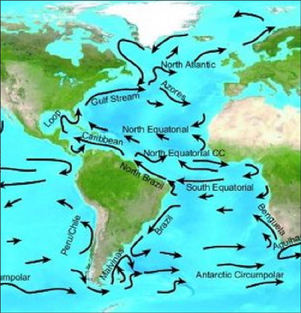Search:
Page Number:
Modeling Ocean CurrentsSkills Reference 2 Skills you Will Use
Safety
Caution You will be handling clay and coloured water. Wear an apron to protect your clothes. Transfer of thermal energy and global winds create major patterns of ocean currents. Seeing these on a two-dimensional map is informative, but it may be difficult to appreciate the nature of the patterns and why they form.
In this activity, you will build a model of the Atlantic ocean and the water currents in it. QuestionHow can you model the movements of ocean water due to surface currents? Materials and Equipment
Dry LabA "dry lab" activity includes collected data and/or a video solution for your convenience. You can simply watch the following video and use the provided data, or if you wish to perform this lab for yourself, follow the procedure steps 1 through 8 described in the video. The same steps are included in written form in the documents available for download on the bottom of this page. Analyzing and Interpreting
Skill Practice
Forming Conclusions
|
